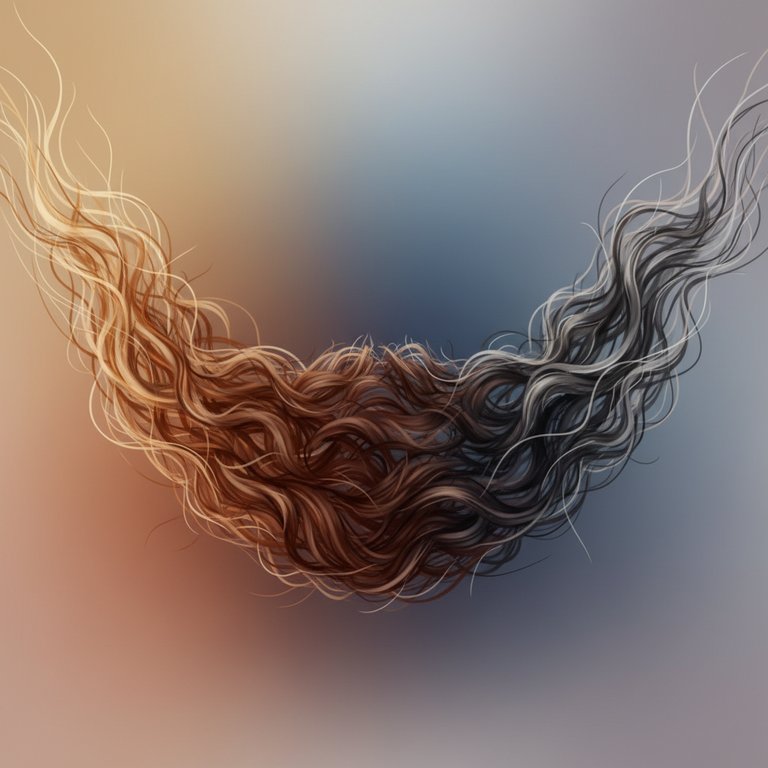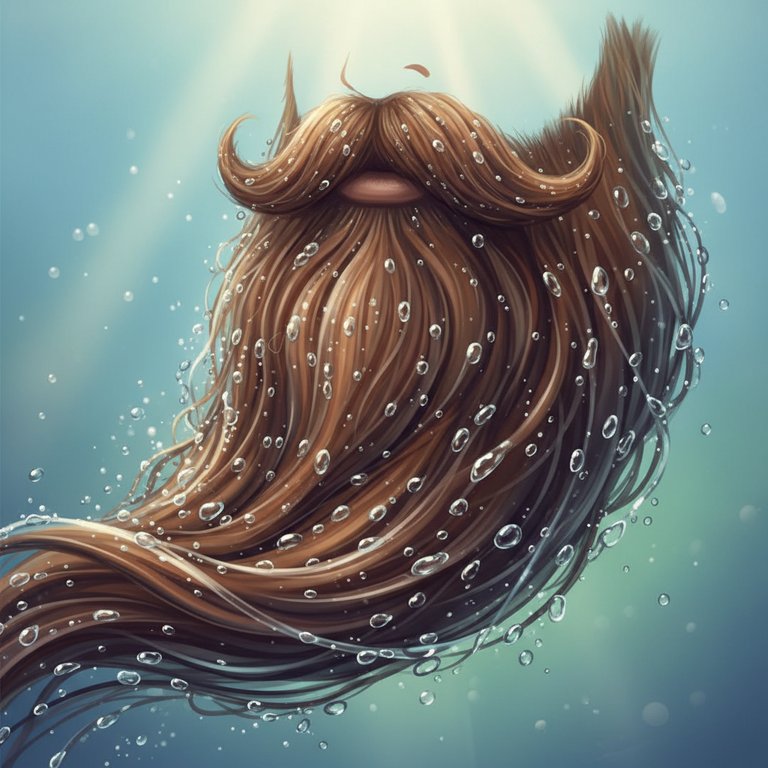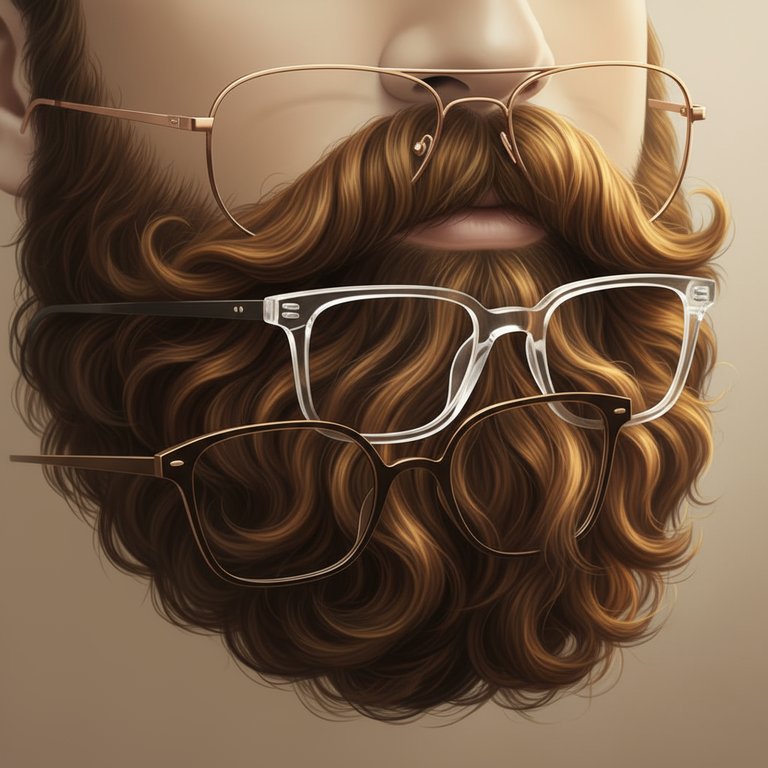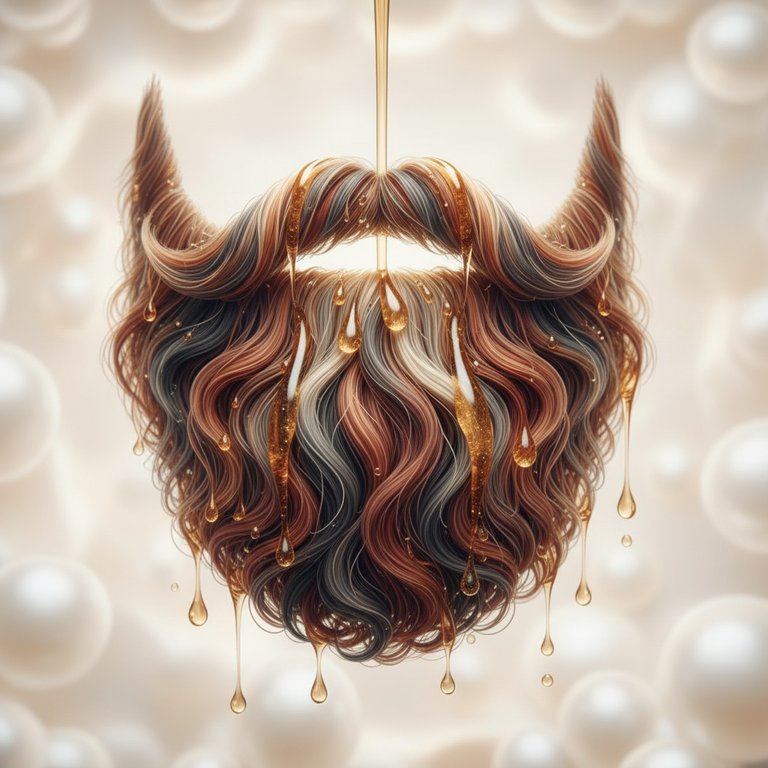Hey there, fellow beard enthusiasts and future magnificent mane-wearers! Ever found yourself staring in the mirror, wondering just how long this incredible beard journey will last? Specifically, you might be asking: "At what age does beard growth stop?" It's a fantastic question, and one that many of us ponder, whether we're just starting our beard adventure or have been rocking a glorious face forest for years.
Let's be real, growing a beard is a marathon, not a sprint. It's a journey of patience, proper care, and understanding your own unique biology. And just like fine wine, our beards tend to get better with age... up to a certain point! So, let's dive into the fascinating world of facial hair growth and uncover when your beard truly reaches its full potential.
The Journey Begins: Understanding Beard Growth
Before we talk about when growth stops, let's quickly recap how it all begins. Beard growth is largely driven by hormones, primarily testosterone and dihydrotestosterone (DHT). These hormones tell your hair follicles, especially those on your face, to wake up and start producing thicker, coarser terminal hairs – what we lovingly call a beard.
The Teenage Years: Patchy Beginnings
For most guys, the first signs of facial hair appear during puberty, typically in their mid-to-late teens. This is often a patchy, sometimes frustrating, phase. You might get some wisps on your upper lip, a few stragglers on your chin, or some faint sideburns. It's all part of the process, and everyone's timeline is different. Patience is your best friend here!
The Prime Years: When Your Beard Hits Its Stride
This is where things get interesting! For the vast majority of men, significant beard growth, density, and thickness really kick into gear in their early 20s. Think somewhere between 20 and 30 years old. During this decade, your hormones are usually at their peak for facial hair development, and your follicles are getting their marching orders loud and clear. This is when many guys notice their beard filling in, connecting, and achieving that coveted "full beard" look.
Personally, I remember my beard really taking off in my mid-20s. Before that, it was a bit thin in places, but suddenly, it seemed like overnight, everything just connected. It was a game-changer for my beard goals!
Beyond the Peak: Does Growth Really Stop?
Now for the million-dollar question: does beard growth ever truly stop? The simple answer is, not in the way you might think. Your hair follicles don't just suddenly shut down at a specific age like a light switch. Instead, it's more about reaching a plateau or a state of maturity.
Reaching Full Potential: The Maturation Phase
Most men will find that their beard reaches its maximum potential in terms of density, thickness, and coverage somewhere between their late 20s and early 30s. By this point, pretty much all the dormant follicles that are genetically programmed to grow a beard will have "activated" and started producing terminal hair.
So, it's not that your beard stops growing entirely; it's that the development of new, thicker hairs typically slows down and eventually ceases. The hairs you have will continue to grow in length (unless you trim them, of course!), but you're unlikely to suddenly sprout a whole new patch of dense hair where there was none before at 40 or 50.
What Happens in Later Years?
As you move into your 40s, 50s, and beyond, several things can happen:
- Continued Length: Your existing beard hairs will still grow in length, following their natural hair growth cycle.
- Color Changes: Many men will notice their beard hair starting to turn gray or white, often before the hair on their head! It's a distinguished look, if you ask me.
- Potential Thinning: For some, as hormone levels naturally shift with age, there might be a very gradual and subtle thinning of beard hair, similar to how head hair can thin. However, this isn't a universal experience and is often less dramatic than head hair loss.
So, to summarize: your beard's developmental growth (filling in, getting thicker) generally reaches its peak and stabilizes by your early to mid-30s. After that, the hairs you have will continue to lengthen, but you won't see significant new density or coverage appearing.
Nurturing Your Beard Through the Years: A Step-by-Step Guide
Regardless of your age, a great beard requires consistent care. Think of it as cultivating a magnificent garden on your face!
Step 1: Cleanse Wisely
Use a dedicated beard wash a few times a week. Regular shampoo can be too harsh and strip your beard of its natural oils, leading to dryness and irritation. A good beard wash cleanses gently without over-drying.
Step 2: Hydrate, Hydrate, Hydrate!
This is crucial. After washing, or even on non-wash days, apply a quality beard oil. Beard oil moisturizes the hair and the skin underneath, preventing itchiness and flakiness. Work it in thoroughly, from root to tip.
Step 3: Condition and Style
For longer beards, a beard balm can provide extra conditioning and help tame stray hairs, giving you a neater, more styled look. Use a good quality beard brush or comb to distribute products evenly, detangle, and train your beard to grow in the direction you want.
Step 4: Trim and Maintain
Even if you're growing it long, regular trims are essential to remove split ends and maintain a healthy shape. A good pair of beard trimming scissors or a dedicated beard trimmer will be your best friends.
My Go-To Habits for a Healthy Beard at Any Age
From my own experience, here are a few simple tips that have made a world of difference for my beard, no matter where it was in its growth journey:
- Be Patient: Seriously, this is the number one rule. Don't expect a full beard overnight. Give it time, especially in those early stages.
- Consistency is Key: Stick to your grooming routine. A few minutes each day makes a huge difference over time.
- Brush Regularly: Not just for styling, but brushing helps exfoliate the skin underneath and distribute natural oils, promoting a healthier environment for growth.
- Live a Balanced Life: While I can't give specific advice, generally feeling good and taking care of yourself can contribute to your overall well-being, which in turn can support healthy hair growth.
- Don't Compare: Everyone's beard journey is unique. Your beard is your beard, and it's awesome. Embrace its unique characteristics!
FAQ: Your Burning Beard Questions Answered!
How to fix a patchy beard?
Ah, the dreaded patchy beard! This is super common, especially in younger guys. First, patience is your greatest tool. Many patches fill in naturally as your beard matures, usually into your late 20s or early 30s. Keep growing it out – sometimes simply letting it get longer allows the surrounding hair to cover thinner spots. Regular brushing can help train hairs to lay over patches. Also, ensure you're consistently using beard oil to keep the skin and hair healthy, which creates an optimal environment for growth. Styling with a good beard balm can also help provide a bit of hold to keep hairs where you want them, masking those thinner areas.
Why does my beard itch so much, especially when it's growing out?
The itch is real, my friend, and it's one of the biggest reasons guys give up on their beard journey! When you first start growing a beard, the new, coarse hairs can irritate the skin as they push through. Plus, the skin underneath can get dry and flaky. The best defense is a good offense: consistent hydration and cleaning. Use a gentle beard wash a few times a week and apply beard oil daily, especially after a shower. The oil will moisturize both your beard hair and the skin beneath, significantly reducing itchiness. Brushing also helps remove dead skin cells that can contribute to itch.
How long does it take to grow a full beard?
This varies wildly from person to person, but generally, to grow what most people would consider a "full beard" (meaning it's reasonably dense, connected, and has some length), you're looking at anywhere from 2 to 6 months of uninterrupted growth. Some lucky guys can achieve it quicker, while others might need a bit more time for everything to connect and reach decent length. Remember, "full" is also subjective. Focus on consistent growth and care, and you'll get there!
Can I trim my beard while growing it?
Absolutely, and in fact, you probably should! While you want to avoid major shaping or taking off significant length in the early stages, light trimming is crucial for maintaining a neat appearance and encouraging healthy growth. Focus on cleaning up the neckline and cheek lines to define the shape, and trim any unruly flyaways or split ends. Think of it as tidying up the edges rather than a full haircut. This keeps your beard looking intentional and well-maintained, even as it gets longer.
Should I wash my beard every day?
Generally, no, not every day with a beard wash. Washing too frequently with even a gentle beard wash can strip your beard of its natural oils, leading to dryness, frizz, and irritation. For most guys, washing with a dedicated beard wash 2-3 times a week is sufficient. On other days, you can simply rinse your beard with water in the shower. The most important thing is to always follow up with a good beard oil to replenish moisture, especially after washing.
What happens if I don't use beard oil?
If you skip beard oil, you're essentially leaving your beard and the skin underneath to fend for themselves! Without beard oil, your beard hair can become dry, brittle, and prone to split ends. The skin underneath can become dry, itchy, flaky, and irritated – leading to "beardruff." Beard oil is like a moisturizer and conditioner rolled into one; it keeps everything hydrated, soft, and healthy, making your beard look and feel much better. Trust me, your beard will thank you for the oil!
Conclusion: Embrace Your Beard's Journey
So, there you have it! Beard growth doesn't "stop" at a specific age, but rather reaches its genetic peak and matures, typically by your early to mid-30s. After that, your existing hairs will continue to grow in length, and with consistent care, your beard can remain a magnificent part of your look for decades to come.
Remember, every beard is a unique masterpiece. Embrace your growth pattern, enjoy the process, and give your facial hair the love and attention it deserves. Happy growing!
Disclaimer: This blog post is intended for informational and entertainment purposes only and is not a substitute for professional advice. Always use products as directed and consider your individual needs.



